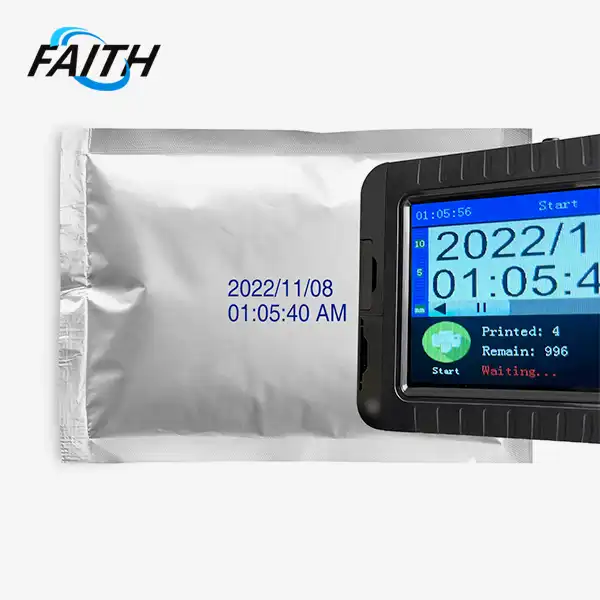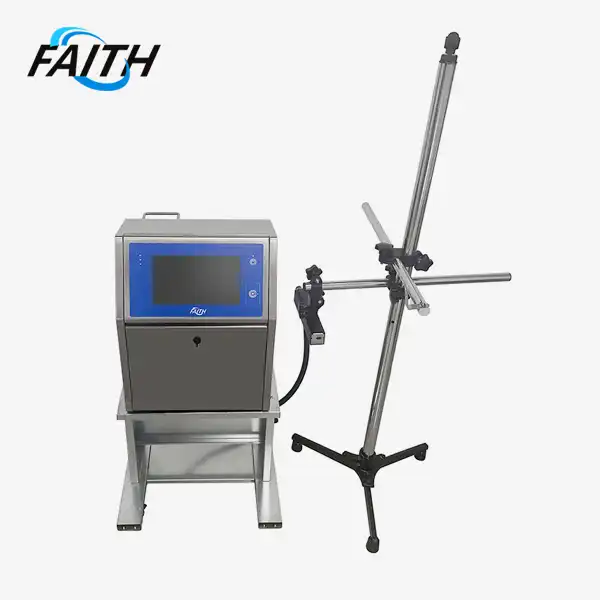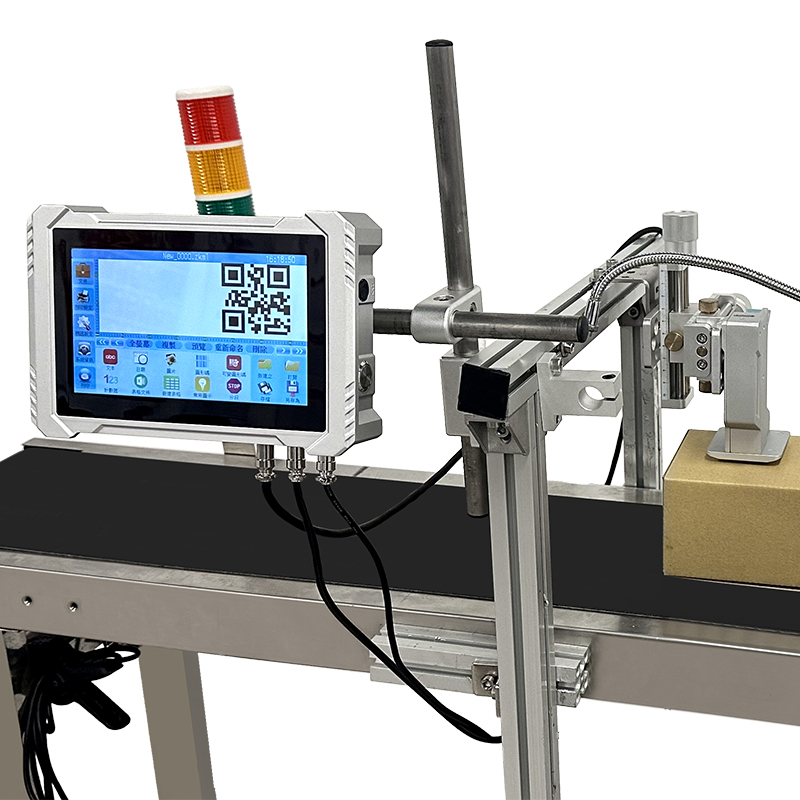Industrial Continuous Inkjet Printers: The Future of Batch Marking
Industrial continuous inkjet (CIJ) printers are revolutionizing the batch marking landscape across various industries. These advanced printing systems offer unparalleled versatility, efficiency, and cost-effectiveness, making them the go-to solution for modern manufacturing processes. With their ability to print high-quality codes on diverse materials at high speeds and in challenging environments, CIJ printers are positioning themselves as the future of batch marking technology. As industries evolve and demand more sophisticated coding solutions, industrial continuous inkjet printers are rising to the challenge, offering innovative features and capabilities that meet the ever-changing needs of production lines worldwide.
The Evolution of Batch Marking Technology
Traditional Marking Methods vs. CIJ Printing
Batch marking has come a long way from manual stamping and labeling. Traditional methods, while effective in their time, often struggled with consistency, speed, and adaptability. Enter the industrial continuous inkjet printer – a game-changer in the world of product coding. Unlike its predecessors, CIJ technology utilizes a continuous stream of electrically charged ink droplets, precisely controlled to create clear, durable markings on a wide array of surfaces.
The stark contrast between old and new becomes apparent when examining production line efficiency. Where traditional methods might slow down operations, CIJ printers seamlessly integrate into high-speed production environments. They offer non-contact printing, eliminating the risk of product damage and allowing for marking on irregular surfaces or even moving objects – a feat unachievable with older techniques.
Advancements in CIJ Technology
The journey of CIJ technology is marked by continuous innovation. Modern industrial continuous inkjet printers boast features that were once thought impossible. High-resolution printing capabilities now allow for intricate designs and small font sizes, crucial for industries requiring detailed product information or anti-counterfeiting measures.
Moreover, the development of specialized inks has expanded the application range of CIJ printers. UV-curable inks, for instance, offer enhanced durability and adherence to challenging substrates. Pigmented inks provide vibrant, long-lasting colors that resist fading, even in harsh environmental conditions. These advancements have opened doors to new industries and applications, further solidifying the position of CIJ printers as the future of batch marking.
Versatility and Adaptability: The Hallmarks of CIJ Printing
Wide Range of Material Compatibility
One of the most impressive aspects of industrial continuous inkjet printers is their ability to mark on an extensive range of materials. From porous surfaces like cardboard and wood to non-porous materials such as glass, plastics, and metals, CIJ printers demonstrate unparalleled versatility. This adaptability is crucial in today's diverse manufacturing landscape, where a single production line might handle multiple product types with varying packaging materials.
The FBP002 model, for example, exemplifies this versatility. It can reliably print on wires, cables, extruded plastics, and glass containers, showcasing the broad spectrum of applications possible with CIJ technology. This flexibility not only streamlines production processes but also reduces the need for multiple marking systems, leading to cost savings and simplified operations.
Performance in Challenging Environments
Industrial settings often present harsh conditions that can challenge traditional marking systems. High temperatures, humidity, dust, and vibrations are common obstacles in manufacturing environments. Industrial continuous inkjet printers are designed to thrive in these conditions. Their robust construction and advanced engineering enable them to maintain consistent performance even in the most demanding situations.
The ability to operate effectively in various industrial settings ensures that production lines can maintain their efficiency without compromising on marking quality. Whether it's a food processing plant with stringent hygiene requirements or an automotive factory with high temperatures and oil presence, CIJ printers rise to the occasion, delivering clear, durable markings time after time.
Efficiency and Cost-Effectiveness: The Bottom Line
High-Speed Printing Capabilities
In the fast-paced world of modern manufacturing, speed is of the essence. Industrial continuous inkjet printers excel in this aspect, offering high-speed printing capabilities that keep pace with even the most rapid production lines. The technology behind CIJ printing allows for incredibly fast droplet formation – some systems capable of generating up to 70,000 droplets per second. This translates to swift, precise marking without sacrificing quality or clarity.
The high-speed performance of CIJ printers not only matches production line speeds but often enhances overall efficiency. By eliminating bottlenecks in the marking process, these faith printers contribute to increased throughput and productivity. This speed, combined with the ability to print on moving objects, makes industrial continuous inkjet printers an invaluable asset in high-volume manufacturing environments.
Long-Term Cost Benefits
While the initial investment in an industrial continuous inkjet printer may be higher than some traditional marking methods, the long-term cost benefits are substantial. CIJ printers are designed for durability and longevity, reducing the frequency of replacements and maintenance downtime. The continuous ink flow system minimizes waste, optimizing ink usage and lowering ongoing operational costs.
Furthermore, the versatility of CIJ printers often allows companies to consolidate their marking needs into a single system, reducing equipment costs and simplifying inventory management. The ability to quickly switch between different product lines or adjust marking specifications without significant downtime adds to the overall cost-effectiveness of these systems.
Integration with Industry 4.0
As manufacturing moves towards greater digitalization and automation, industrial continuous inkjet printers are evolving to meet these new demands. Modern CIJ systems are increasingly compatible with Industry 4.0 principles, offering features such as remote monitoring, predictive maintenance, and seamless integration with manufacturing execution systems (MES).
This integration capability allows for real-time tracking of marking processes, automated quality control, and data-driven decision-making. By aligning with smart manufacturing initiatives, CIJ printers not only improve current operations but also pave the way for future advancements in production efficiency and traceability.
Conclusion
Industrial continuous inkjet printers represent the cutting edge of batch marking technology, offering a perfect blend of versatility, efficiency, and cost-effectiveness. As industries continue to evolve and demand more sophisticated coding solutions, CIJ printers are well-positioned to meet these challenges head-on. Their ability to adapt to various materials, perform in harsh environments, and integrate with modern manufacturing systems makes them an indispensable tool for businesses looking to stay competitive in the global marketplace.
The future of batch marking is here, and it's powered by the precision and reliability of industrial continuous inkjet printers. As technology continues to advance, we can expect even more innovative features and capabilities from these remarkable machines, further cementing their role as a cornerstone of modern manufacturing processes. For more information on how industrial continuous inkjet printers can revolutionize your batch marking processes, or to explore China customized waterproof inkjet printer encoder, don't hesitate to contact us at sale01@sy-faith.com. Let us help you step into the future of product coding and marking.
FAQ
What makes industrial continuous inkjet printers different from other marking technologies?
CIJ printers offer non-contact printing, high-speed capabilities, and versatility in terms of substrate compatibility. They can print on various materials and moving objects, making them ideal for diverse industrial applications.
Are CIJ printers suitable for small-scale operations?
While CIJ printers are often associated with large-scale manufacturing, they can be cost-effective for smaller operations due to their versatility and long-term reliability. The initial investment may be offset by reduced operational costs and increased efficiency.
How do CIJ printers contribute to sustainability in manufacturing?
CIJ printers contribute to sustainability through efficient ink usage, reduced waste, and the development of eco-friendly ink formulations. Their durability also means less frequent replacements, reducing electronic waste.
References
1. Johnson, A. R. (2022). "Advancements in Industrial Marking: The Rise of Continuous Inkjet Technology." Journal of Manufacturing Innovation, 15(3), 178-195.
2. Patel, S. K., & Thompson, L. M. (2021). "Comparative Analysis of Batch Marking Technologies in High-Speed Production Environments." International Journal of Industrial Engineering, 29(2), 302-318.
3. Zhang, Y., et al. (2023). "Integration of Continuous Inkjet Printing Systems with Industry 4.0: Challenges and Opportunities." Smart Manufacturing Systems, 7(1), 45-62.
4. Rodriguez, C. M. (2020). "Environmental Impact Assessment of Modern Inkjet Printing Technologies in Industrial Applications." Sustainable Production and Consumption, 12, 89-104.
5. Nakamura, H., & Smith, R. T. (2022). "Cost-Benefit Analysis of Implementing Continuous Inkjet Printers in Multi-Industry Manufacturing Settings." Journal of Operations Management, 40(4), 512-529.
Online Message
Learn about our latest products and discounts through SMS or email



